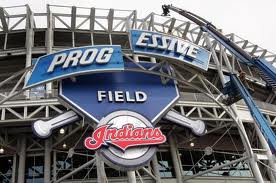 By now, you’ve heard that the Cleveland Indians have a bit of an attendance problem. They’re drawing an average of 18.4K per game, which is dead last in the majors.
By now, you’ve heard that the Cleveland Indians have a bit of an attendance problem. They’re drawing an average of 18.4K per game, which is dead last in the majors.
Believe it or not, Indians fans actually give a damn about their professional baseball team. We love our team, we really do, it’s just that when it comes to our attendance and proactive support, we have more built-in-excuses than an Intervention subject on A&E. These excuses are not created equal, for there is a degree of weight attached. I’m here to specifically dole all of that weight out as I blame the lack of attendance on everything and everyone but myself. In other words, I’m going to pass the buck. Here's part one of two part installment.
Depreciation of Progressive Field: (10% Responsible)
When will the crowds actually pick up? That’s what we’ve been asking ourselves all year. My primary response: If the Indians remain in contention, the crowds will pick up in late August. My secondary response: They’ll start to pick up some time around the year 2230, when Sherwin Williams Field is built directly on top of Lake Erie.
Right now, the Indians are a baseball franchise in limbo. When Jacobs Field opened in 1994, it was a magnificent, state of the art ball park—like something out of the future that none of us had seen before. But since the park opened its gates some 20 years ago, 19 new ballparks have been built across Major League Baseball. All 19 of these parks used the stadiums before them to create a better, more unique park than that of any before. They had to.
Of the 10 franchises with stadiums outdating Progressive Field, three of those franchises (Red Sox, Cubs, and Dodgers) have historic parks in which the tradition aspect alone makes up for the lack of a VIP dance club, 1000 foot jumbo-tron, a swimming pool, a small shopping mall, a escort service, and any other obnoxious augmentation teams have plugged into their stadiums in a attempt to outdo the other. That leaves us with 7 teams: the Jays, White Sox, Orioles, Rays, Royals, Rockies and the A’s. As we speak, six of these seven teams rank in the bottom third of the league in attendance. Furthermore, whether a result of this or not, over the last decade or so, they’ve all operated on a small budget—with exception to the White Sox who are conveniently located in the mega market of Chicago.
A year ago, the Florida Marlins would have been included in that grouping. For the greater part of their franchise existence, the Marlins have spent so little cash on pay roll that they actually made a net profit before the season even began. (That’s all in thanks to the way baseballs system of revenue sharing works.) Now, those Marlins are the Miami Marlins and after the completion of their stadium this past year, they were able to spend a glaring amount of cash and went into opening day payroll of $118 million.
After threatening contraction in the early part of the 00‘s, the Twins used the same model when they moved into Target Field in 2010. They signed Joe Mauer to a giant—and I mean giant—8 year $184 million extension solely because of the extra cash their new stadium was projected to generate. 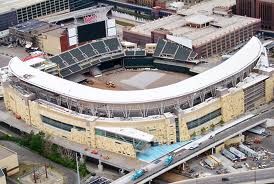 Minnesota is currently the sixth worst team in baseball with a payroll that far exceeds that of the Indians, but luckily their ticket sale projections haven’t disappointed. This season they hold claim to the 12th best attendance rate in baseball. This isn’t because the folks up in Minnesota have a greater love for baseball and their hometown team, it’s tied to the fact that Target Field—even two years into its existence—is still a fabulous venue to take in a game just because of how new and original it is. (More on this in Part 2)
Minnesota is currently the sixth worst team in baseball with a payroll that far exceeds that of the Indians, but luckily their ticket sale projections haven’t disappointed. This season they hold claim to the 12th best attendance rate in baseball. This isn’t because the folks up in Minnesota have a greater love for baseball and their hometown team, it’s tied to the fact that Target Field—even two years into its existence—is still a fabulous venue to take in a game just because of how new and original it is. (More on this in Part 2)
Simply put, it’s hard to get people to watch a live baseball game in the year 2012. That’s why teams are going all out with their stadiums. Of the four main sports, baseball is the only sport where teams have the ability to differentiate their stadiums in large ways. It’s the only sport where teams can flex their muscles and build a architecturally unique place. The unique differentiation in the stadiums is really what makes the experience of attending a baseball game so great. The New Yankee Stadium has two upscale steak joints, a Hard Rock Cafe, and a team Hall of Fame shrine that legitimately puts Cooperstown to shame. The Marlins new stadium has VIP suites that rivals the South Beach, nightclub VIP experience. Miami also took the lead in the arms race to build the fastest operating retractable roof.
Meanwhile, the Indians recently completed a renovation for a 4,000 square foot “Kids Clubhouse.” It’s supposed to enhance a child’s ball park experience, providing them with a number of cool things to do rather than having to watch a slow paced, 3-hour game with their parents. It’s ironic. On one hand you have the Indians marketing team frantically trying to lure more family’s to the stadium, and building the Kid Clubhouse seemed like the best course of action to accomplish that; but on the other hand, aren’t they involuntarily taking a generation of ‘would be’ Indians fans—as well as future ticket holders—and distancing them away from this team and the game of baseball altogether? To be fair though, the Indians aren’t any different from the rest. They’re trying to give people an un-cracker-jack related reason to attend a baseball game in the 21st century. Ultimately, that’s what this stadium boom is all about.
Sadly, the Indians will have to make due with dollar dog and firework specials for the next 200 years.
The Decline of the sport and Major League Baseball: (12.5 % responsible)
There’s an overall decline in the appeal of baseball. When I was growing up, which wasn’t all that long ago (I’m 22 right now), we spent our formative years playing pick-up baseball in the neighborhood, depleting our parents bankroll with the purchase of baseball cards, and overall, just being absolutely obsessed with baseball. Maybe the Indians decade run of greatness inspired us, or maybe it was the onslaught of films such as The Sandlot, Rookie of the Year, and Angels in the Outfield. Or maybe it was the fact that it was the Nintendo 64 era before the internet took off and before parents considered it unsafe to let their kids venture to local parks for fear of child predators. Regardless of the case, b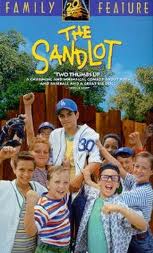 aseball is now a slow paced game in a up tempo world where everyone has been self diagnosed with some sort of attention deficit disorder. Plenty of people would rather watch two guys beat the hell out of each other in the middle of an octagon or look on as two hockey player's assault each other than they would watch a three hour baseball game (a game where only 8-12 minutes of total action takes place). But that’s not even scratching the surface to its problems.
aseball is now a slow paced game in a up tempo world where everyone has been self diagnosed with some sort of attention deficit disorder. Plenty of people would rather watch two guys beat the hell out of each other in the middle of an octagon or look on as two hockey player's assault each other than they would watch a three hour baseball game (a game where only 8-12 minutes of total action takes place). But that’s not even scratching the surface to its problems.
A MLB game is what it is... 1 of 162. When you think about it, that’s a ton of games. The 162 game schedule isn’t just the root of the Indians attendance problems, but all of Major League Baseball’s problems, too. Whether or not you agree, for the consensus of people, the season is way too long and taxing. This past offseason, baseball tried to combat some of their problems by adding an extra wild card team in each league. Now, for four teams, a 162 game season will come down to a one game playoff; two fan bases will experience, firsthand, the hard reality of a sunk cost. From the fans perspective, a lot of sweat, blood, nerves, and tears go into a Major League Baseball season if you follow your team over the course of six months. Now, all of it could come crashing down in a final one game playoff where your teams ace may or may not even be in line to pitch. But even before they implemented the extra wild card it was deflating to know that a best-of-five series would determine your teams fate or advancement. Can you even blame fans for falling below the threshold of apathy when it comes to their hometown baseball team?
Do you know why the NFL and college football are the most popular sports and no other league(s) come close? It’s not because of all the hard hits that take place, the tailgating atmosphere, or the fact that 97 percent of the players are American born and bred, it’s because they play less than 20 games. It’s a mathematical anomaly that the MLB, NHL, and NBA has yet to figure out; less is more. It sounds elementary, but less games equals more meaningful games; more meaningful games equals more accountability taken by the fans; more accountability by the fans equals more people in the stands. There’s a reason the Indians can’t draw a crowd to save their life during the season but would have no problem selling out games in the postseason. During the season, when we're mauling the option of whether or not we should make a trip to the stadium ans take in a game, in the back of our mind we know there will be many others to attend. Using this logic, we progress into state of procrastination, realizing, "Hey, this game is no more important than one, say, two or three weeks later from now that we can go to." Yep, it's true.
It’s all so simple, play a balanced 70 game schedule in the same five month (April to October) span.
The Ban of Steroids: (15% responsible)
One of my guilty pleasures in life is staying in on a Friday night, taking a few shots of bourbon, going onto baseball-reference.com and staring in awe at the home-run totals that were put up during the height of baseball’s steroid era. I’m aware that I might have a problem.
Call me ignorant, but the game was 100 times better when.... a 32 year old Brady Anderson could come out and hit 50 home runs after hitting 13, 12, and 16 in the previous three seasons with nearly the same number of at bats; when Brett Boone was producing statistical outliers; when Luis Gonzalez was jacking up MVP like numbers and hitting 55-plus home runs; when a guy like Shelly Duncan could make the leap and fill a positional void simply by “hitting the gym” in the offseason. (long sigh)
The Diabolical-Ineptitude of the Cleveland Browns: (7% responsible)
When paying reverence to the Tribe’s streak of 455 consecutive sellouts (something Indians’ fans think about and are reminded of on a daily basis) the first thing we point to—as a major contributor to that streak—is the Browns three year absence from the NFL. Now that the Browns have a home in Cleveland again we figure it has hurt the Tribe’s attendance over the years. However, the re-existence of the Browns and the their withstanding popularity in this city isn’t what’s stealing the Indians thunder; rather, it’s the Browns inability to resemble a professional football franchise and the contradictory effect it has.
I keep hearing the term “Browns Town” being thrown around and it’s getting a little old, admittedly. Browns fans hate this team. No, really, we remind ourselves of this at least 30 times during the course of a 16 game season. It’s always around this time of the year when we forget how this team has repetitively (and metaphorically) thrown us to the ground. Kicked dirt on us. Spat in our face. Kicked our skulls in. Tore our hearts out. Threw us to the side of the road and left us for dead. That would normally register with a lot of fans, but not right now; not as the teams training camp is so close away.
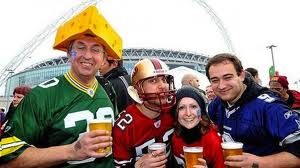 Like the girl who keeps getting back together with her douche boyfriend, it just seems wrong to say Cleveland is a “Browns town.” I’m not ignorant, I grew up around Cleveland and I fully understand this is a football city with the Browns at the forefront of the picture. I just feel the need to point out a common misconception. Cleveland isn’t a Browns town, it’s the same as any other major city in this country... a city with fan base that is in love, obsessed, and most likely addicted to the NFL. Football is essentially a subculture in Ohio, it’s just that our professional team is one of the saddest in all of sports. In the ideal world, this would have a positive impact on the Indians and their yearly ticket sales, especially during their periods of rare contention. But that’s not how it works. Browns fans are too deep. The NFL game is too popular. The division rivals are too heated. The 3 hours we spend each Sunday have sooo much at stake that our brains releases a stimulating hormone that keeps us coming back for more. All any Browns fan wants is to have a competitive team so we can actively participate in this country’s No. 1 festivity and past time. We want it so bad that we’re willing to follow the team every step of the way until they get there. The Indians and Browns differ in one principle way. The Indians glass is usually half full. The Browns glass is always half empty. The only reason the Browns glass is half empty is because we’re in a desert and we are really (expletive) thirsty.
Like the girl who keeps getting back together with her douche boyfriend, it just seems wrong to say Cleveland is a “Browns town.” I’m not ignorant, I grew up around Cleveland and I fully understand this is a football city with the Browns at the forefront of the picture. I just feel the need to point out a common misconception. Cleveland isn’t a Browns town, it’s the same as any other major city in this country... a city with fan base that is in love, obsessed, and most likely addicted to the NFL. Football is essentially a subculture in Ohio, it’s just that our professional team is one of the saddest in all of sports. In the ideal world, this would have a positive impact on the Indians and their yearly ticket sales, especially during their periods of rare contention. But that’s not how it works. Browns fans are too deep. The NFL game is too popular. The division rivals are too heated. The 3 hours we spend each Sunday have sooo much at stake that our brains releases a stimulating hormone that keeps us coming back for more. All any Browns fan wants is to have a competitive team so we can actively participate in this country’s No. 1 festivity and past time. We want it so bad that we’re willing to follow the team every step of the way until they get there. The Indians and Browns differ in one principle way. The Indians glass is usually half full. The Browns glass is always half empty. The only reason the Browns glass is half empty is because we’re in a desert and we are really (expletive) thirsty.
The Indians and Browns have two separate seasons that begin and end during the exact same time on the calendar. When the Indians open the season in April, so do the Browns; April’s the NFL Draft, a annual event that many view as the city’s Super Bowl. By the time the baseball season kicks into full summer gear, Browns training camp is underway; in training camp, it’s the orange helmets on defense scrimmaging the orange helmets on offense; it’s a win-win. In October, as the baseball season comes to a close, so does the Browns as they shoot down their playoff chances by starting 1-4 or 0-3.
If the Browns were respectable, fans might be able to engage in a normal offseason. Nope, they're terrible and drive us crazy, and it's only made us further bleed the brown and orange. A message for Chris Perez and the current Indians: It sucks doesn't it
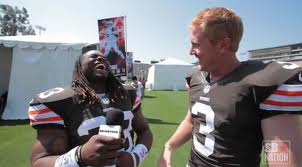 The most captivating offseason in recent Browns/Cavs history: (1 % Responsible)
The most captivating offseason in recent Browns/Cavs history: (1 % Responsible)
In April, the Browns had two first-round picks, one of them at No. 3 and the other at No. 22. The one was used on Trent Richardson, perhaps the best running back to come out of college since O.J. Simpson. The other was used to take hopeful franchise quarterback, Brandon Weeden, who would have been a top ten pick had he been five years younger. So for the first time in three decades the Browns had two first round picks and they used those selections to acquire two player’s who will touch the ball on 99% of every offensive play. The draft really was comparable to a Super Bowl. Meanwhile, across the street from Progressive Field the Cavs had two first round picks in their respective draft as well—and through the NBA lottery, arguably the most entertaining caveat in sports—they had good chance at landing the safest, sure-bet, big man to come out since Tim Duncan. The Cavs were also coming off a hump season in which Kyrie Irving had the second best statistical year in the modern era of the NBA for rookie point guards.
According to the Official Manual of Cleveland Sports, in this town, having an offseason like this is the meta-equivalent of having a threesome. Situations such as this simply don’t happen often; it’s as if all the planets aligned. Unfortunately, explaining the improbability of the situation doesn’t negate the fact that we cheated on our significant other. Will they forgive us?
What other choice they got?